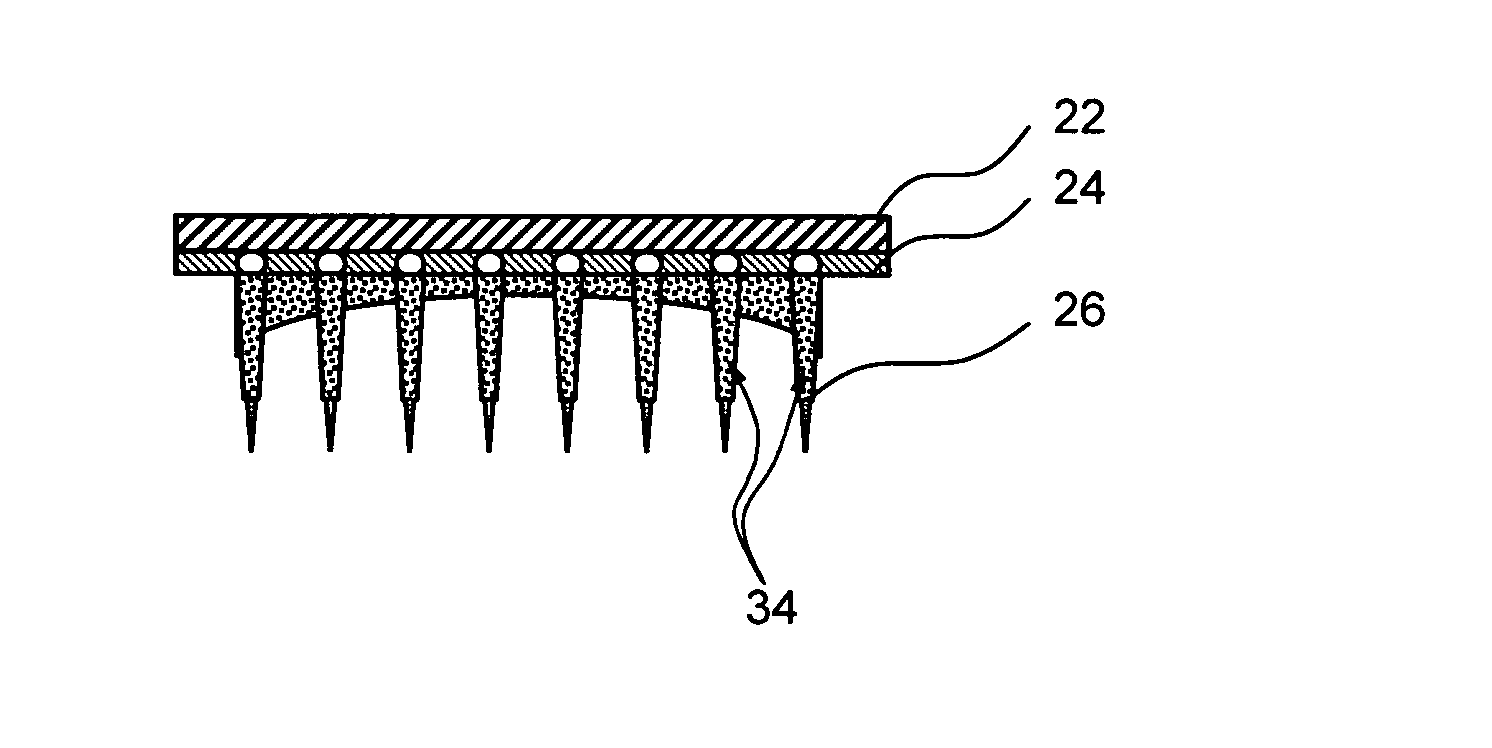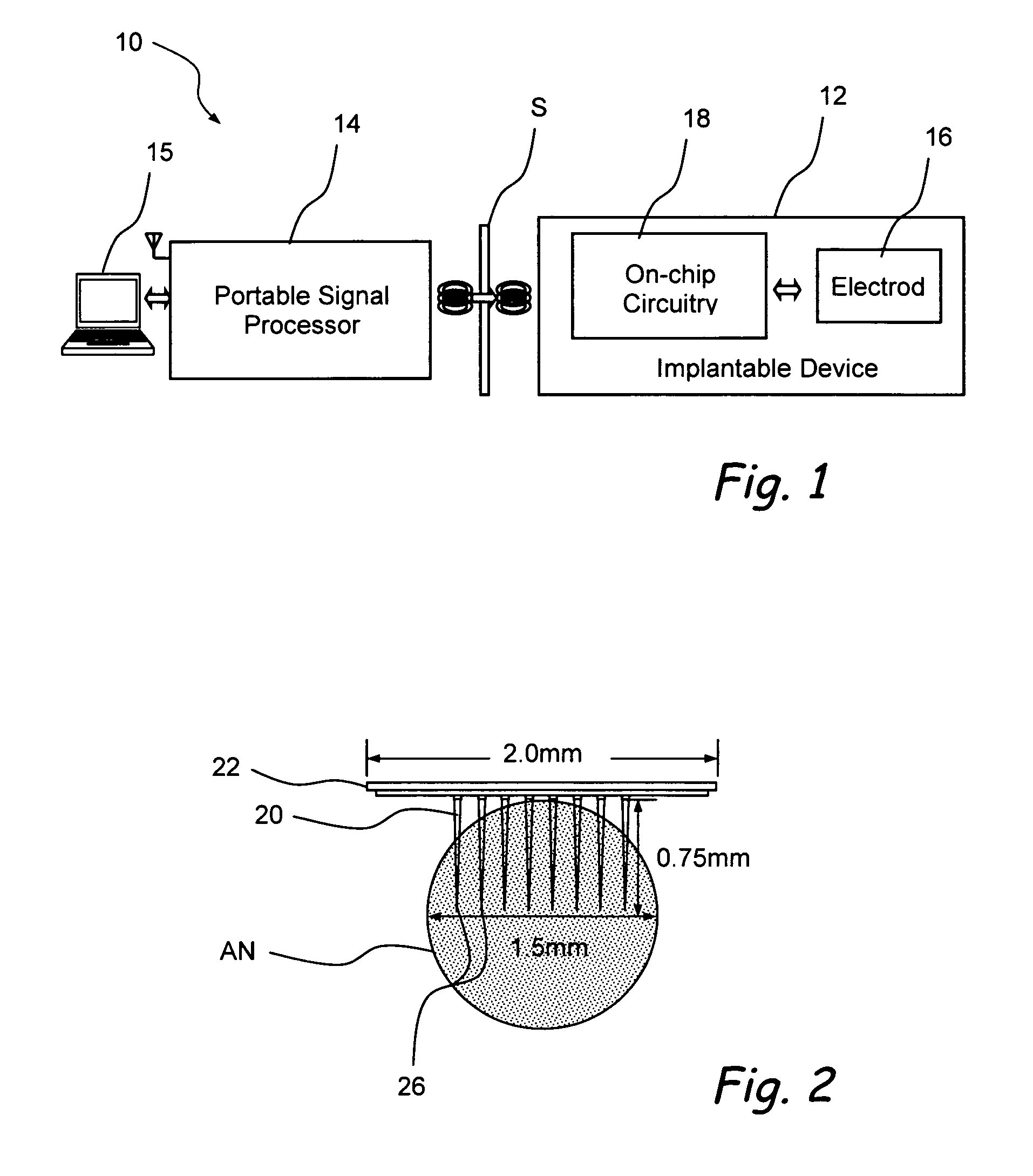High density micromachined electrode arrays useable for auditory nerve implants and related methods
a micromachined electrode and auditory nerve technology, applied in the field of electrical and biomedical engineering, can solve the problems of high power consumption, unable to accurately place the electrode, and the iridium wire electrodes did not permit atraumatic insertion, so as to improve the sound sensation, reduce the heat of the flip chip, and improve the effect of electrode density
- Summary
- Abstract
- Description
- Claims
- Application Information
AI Technical Summary
Benefits of technology
Problems solved by technology
Method used
Image
Examples
Embodiment Construction
[0033]The following detailed description, the drawings and the above-set-forth Brief Description of the Drawings are intended to describe some, but not necessarily all, examples or embodiments of the invention. The contents of this detailed description, the accompanying drawings and the above-set-forth brief descriptions of the drawings do not limit the scope of the invention or the scope of the following claims, in any way.
[0034]FIG. 1 is a schematic diagram of a auditory neural prosthesis system 10 comprising an implantable device 12 and a signal processor 14. The implantable device comprises an intraneural electrode array 16 with integrated on-chip circuitry 18 which can communicate in wireless fashion through the skin S with the signal processor 14. The electrode array 16 with on-chip circuitry 18 is implanted such that the electrodes of the array 16 are inserted into the auditory nerve of a human or animal subject. A bi-directional RF telemetry link is used to transfer both dat...
PUM
 Login to View More
Login to View More Abstract
Description
Claims
Application Information
 Login to View More
Login to View More - R&D
- Intellectual Property
- Life Sciences
- Materials
- Tech Scout
- Unparalleled Data Quality
- Higher Quality Content
- 60% Fewer Hallucinations
Browse by: Latest US Patents, China's latest patents, Technical Efficacy Thesaurus, Application Domain, Technology Topic, Popular Technical Reports.
© 2025 PatSnap. All rights reserved.Legal|Privacy policy|Modern Slavery Act Transparency Statement|Sitemap|About US| Contact US: help@patsnap.com



